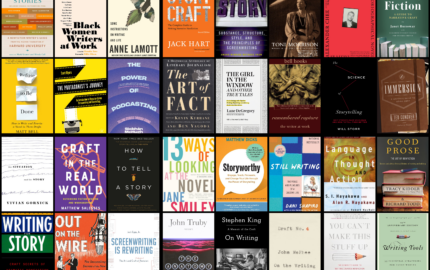Editor's note: This is the first of five posts from the 2022 Power of Narrative conference at Boston University. For other takeaways, read Lizzie Johnson on deadline narrative and Debbie Cenziper on investigative narratives.
New York Times reporter Ellen Barry built her reputation for rock-solid work as a foreign correspondent in Moscow, New Delhi and London. She came back to the U.S. to report from the Times’ New England bureau, and now covers mental health issues. Her credentials include a shared Pulitzer Prize for international reporting, and Pulitzer finalist awards for breaking news and beat reporting.

She was again a Pulitzer finalist in 2020, this time for feature writing that took a first-person approach to a profile of “The Jungle Prince of Delhi.” While still reporting from India, Barry was invited to interview the mysterious Prince Cyrus of Oudh, a local legend claiming to be a member of the royal family of Oudh, who lived in a run-down hunting lodge in the jungle. As she unspooled his story for readers, she included her own discovery experience as well, a writing form that was new to her.
In a session at the 2022 Boston University Power of Narrative conference, Barry offered three major take-aways about the challenges and benefits of including yourself in your story:
Stepping into the story
The night before her story was posted in November 2019, Barry worried that she had gotten a minor fact wrong or that the story would be interpreted as a heroic tale told through the arrogance of a foreign observer.
As a reporter for 25 years, Barry had trained herself to be absent from her stories. However, while writing this piece, she was urged to put herself into the narrative.
“First person has enormous torque,” Barry said. “You can take the reader with you, step by step in an investigation in a way that builds suspense and gradually unfolds search and discovery, that are part of every investigation.”
Inventing the author
Since she chose when to include herself in her piece, she felt as though she was inventing an author based on the details of her reporting and interviewing encounters that she chose to keep.
Related reading
She recommends thinking about how you are creating that voice, especially in an investigation where you come in with one idea and come out with another. Remember to ask yourself who the author is, how they are characterized and how their perspective changes as they report.
Adding certain details, such as showing up for an interview with a McDonald’s Filet O’Fish, or the feelings she had upon hearing of Cyrus’ death, can ground a story and make the reader realize that the author is just a normal person who gets excited over a G-chat message or experiences grief.
When to step into the story
When inserting yourself into the narrative, Barry says that it has to be with purpose in ways that make the story more powerful without compromising the reporting. First-person moments cannot be based on your indulgences as a writer. If using the first person tells a story about the author as well as the subject (with a beginning, middle and end), then it can be beneficial to a story.
“Using first person, you speak with the voice of a subject, you can be almost like a ventriloquist,” Barry said. “You can thrust yourself and the reader into the middle of the dilemma…in a way that is immediate and puts the reader right right into the middle of the situation.”
***
Joyce Doherty is a senior journalism student at Boston University. Her interests range from long form narratives, investigative pieces and housing justice issues.


